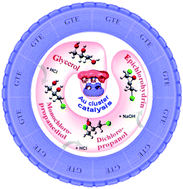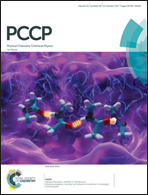Small gold clusters catalyzing the conversion of glycerol to epichlorohydrin†
Abstract
The conversion of glycerol to epichlorohydrin (GTE) is of great interest because the product is widely used in plastics, rubbers and adhesives, and also contributes to the disposal of the reactant glycerol, a major by-product in biodiesel production. Here we find effective catalysis by small gold clusters for the GTE reaction in water with an enhanced selectivity towards the desired product. Along with natural bond orbital (NBO) analysis rationalizing the donor–acceptor charge-transfer interactions, we illustrate the mechanism for bond activation in the reactants and intermediates over gold cluster catalysts, and present thermodynamically and kinetically favoured reaction pathways for dehydrochlorination in GTE processes.



 Please wait while we load your content...
Please wait while we load your content...